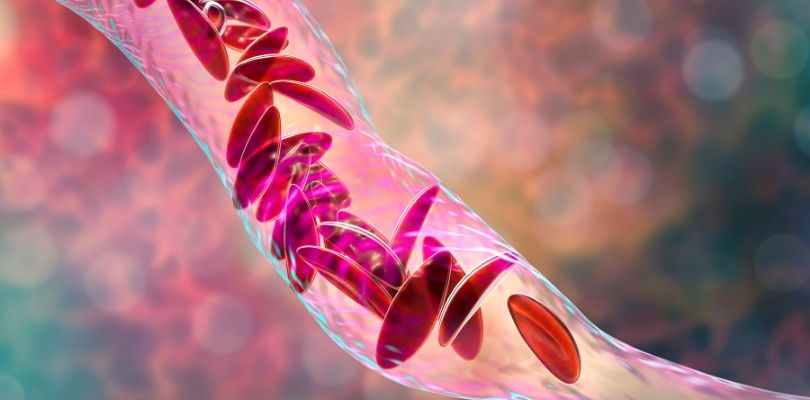Common Hair Loss Causes
Losing hair is like losing a part of you.
Not to mention it makes you look way older than you are and takes a hit at your self-esteem.
Unlike acne that mostly affects teenagers, hair loss can be experienced by anyone regardless of age.
Depending on its cause, hair loss can either be temporary or permanent. Either way, it’s a sign that there’s something wrong in your body.
If not properly addressed, the physical and emotional costs of losing hair can get in the way of your daily life.
Various factors or disorders can explain your hair loss, and it’s your responsibility to find the exact cause with the help of your doctor. This way, you can get the best treatment appropriate to your condition.
What Is Hair Loss?
Understanding hair loss begins with a brief review of the human hair growth cycle.
It starts with anagen or growth phase during which hair strands grow at a steady rate for about two to six years. It is followed by catagen where the hair follicles undergo degeneration for a few weeks.
Then, the follicles will lie dormant for about three months or so before they fall out.
Hair loss occurs when diseases, drugs, or chemical reactions damage the hair follicles. It may also be caused by a hormonal imbalance which triggers the hair follicles to shed or fall out earlier than they should.
On average, we lose approximately 50 to 100 hairs from our scalp each day.
If you shed more hair, or if you notice sudden thinning or formation of bald patches, consult with your physician to rule out possible underlying conditions.
What Causes Hair Loss?
Although we don’t recommend that you self-diagnose, the following list provides an overview of the most common hair loss causes and how to treat them:
Stress
Telogen effluvium is a type of hair loss that occurs about three months after a major stressful event.
The stress needs to be severe or prolonged enough for it to disrupt the regular hair growth cycle. Hence, a minor bout of depression or a single night of sleeplessness may not be enough to lose your hair.
On the other hand, prolonged illness, major surgery, childbirth, or severe infection are traumatic experiences that often lead to telogen effluvium.
Scientific studies show that the high level of stress hormones causes hair follicles in anagen or growth phase to prematurely transition to the shedding phase all at the same time.
Since there is a gap between anagen and telogen, the hair follicles don’t begin to fall out until about three months after the stressful event.
As soon as the source of stress is addressed or avoided, the normal hair growth cycle will resume within a few weeks or months.
Medications
Drug-induced hair loss can last as long as you continue taking the medication.
For some patients, this side-effect is inevitable and an expected part of the treatment procedure.
Chemotherapy drugs like doxorubicin stall the progress of the disease by targeting rapidly dividing cancer cells. Unfortunately, in the process of killing these abnormal cells, they also target other rapidly dividing cells in the body like the hair follicles.
As a result, more than 90 percent of hair follicles in anagen or growth phase fall out as soon as the chemotherapy begins. Also known as anagen effluvium, this condition causes hair loss by impairing the metabolic activities of hair follicles.
If you’re already losing hair, avoid medications that can aggravate your condition. Drugs that can cause hair loss include levodopa, warfarin, heparin, amphetamines, lithium, and beta-blockers.
Fungal Infection
Among children, tinea capitis is the most common cause of patchy hair loss. Also known as “ringworm of the scalp,” this fungal infection irritates the scalp leading to redness and inflammation.
As the disease progress, the scalp becomes scaly or flaky. The hair follicles then start to fall out in small circles leading to its characteristic patchy hair loss.
Treatment is done systemically with the help of a pediatric dermatologist.
Have you ever wondered what Peyronie's Disease is? Here you will learn what to look out for and how to treat the symptoms.
Medical illness
Hair loss can also be a result of hormonal imbalance, malnutrition, or disorders that derail hair growth.
Hair loss restoration, therefore, can only happen once the disease itself is cured.
Diseases that can cause hair to fall out include thyroid disorders, sex hormone imbalance, syphilis, and systemic lupus erythematosus.
Low levels of iron, biotin, or zinc can also deprive hair follicles of the vitamins and minerals required for growth. These nutrient deficiencies are common among women with heavy menstrual flow and those in restrictive diets.
Autoimmune Disorder
An autoimmune disease happens when your body attacks its own cells. In the case of alopecia areata, the immune system targets the hair follicles which leads to sudden patchy hair loss.
Although the exact cause of alopecia areata is unknown, people with a history of other autoimmune disorders are the most likely to suffer.
The disease is unpredictable, so outcomes vary from your hair growing back after a year or the disease becoming permanent.
Hair loss can also be more extensive ranging from total loss of scalp hair (alopecia totalis) or the entire hair of the body (alopecia universalis).
Trauma
Also known as trichorrhexis nodosa, this type of hair loss is a result of exposure to hair treatments involving extreme heat (ironing) or harsh chemicals (bleaching, hair coloring, etc.).
It can also be due to tight hairstyles like a ponytail, cornrow, or braids which apply traumatic pulling force to the hair.
Recent studies also reveal that even emerging hair products many users think are safe can also lead to hair loss. Using dry shampoos, for instance, is a great way to soak up excess oil, but it can also irritate the scalp and cause the hairs to stick together and fall out at the same time.
Another type of traumatic hair loss is trichotillomania, an impulse-control disorder characterized by compulsive pulling of hair. This uncontrollable behavior leads to patches of hair loss with broken hairs of varying lengths.
Trichotillomania is psychiatric. It can be treated with the help of a psychologist who will then assist the patient deal with the inner conflicts or stress fueling the behavior.
Genetics
For both men and women, genetics proves to be the leading cause of hair loss.
Androgenetic hair loss, also known as male- or female-pattern baldness, starts to rear its ugly head at the age of 30. However, it can occur as early as teenage years for men or as late as post-menopausal years among women.
Each gender also shows distinct patterns of baldness.
While women experience diffuse thinning of their crown, men suffer from receding hairline as well as hair loss throughout the top of the scalp. For men with advanced cases of male-pattern baldness, the remaining hair can take a distinct “horseshoe” shape.
Androgenetic hair loss is a result of the combined influences of genetics, hormonal levels, and increasing age. While all men and women will show signs of thinning hair, approximately 40 percent of the population will experience a more visible form of baldness.
It has been pointed out that testosterone plays a pivotal role in hair loss. Men have it by default while women also have trace amounts in their bodies.
However, recent studies suggest that it’s not testosterone, but its derivative--also known as dihydrotestosterone (DHT)–that is causing your hair to fall out.
In the case of androgenetic hair loss, it’s not baldness per se that we inherit but a sensitivity to DHT. This hormone forms when testosterone binds to an enzyme found in the oil glands of hair follicles.
Once the DHT is formed, it then connects to the receptors of the hair follicles, causing them to shrink and making it close to impossible to form another healthy hair again.
The Bottom Line
The hair is our crowning glory. Hence, losing it can lead to negative consequences for our self-esteem.
It’s your responsibility to avoid hairstyles, products, or procedures that can apply traumatic force to your hair follicles more than they can tolerate.
If you’re losing an unusually large amount of hair, don’t hesitate to consult your doctor.
Although the ultimate cure for hair loss is yet to arrive on the market, some medications and products are scientifically proven to restore growth of your hair follicles and make them healthier.
Don’t forget to try everything with caution.







